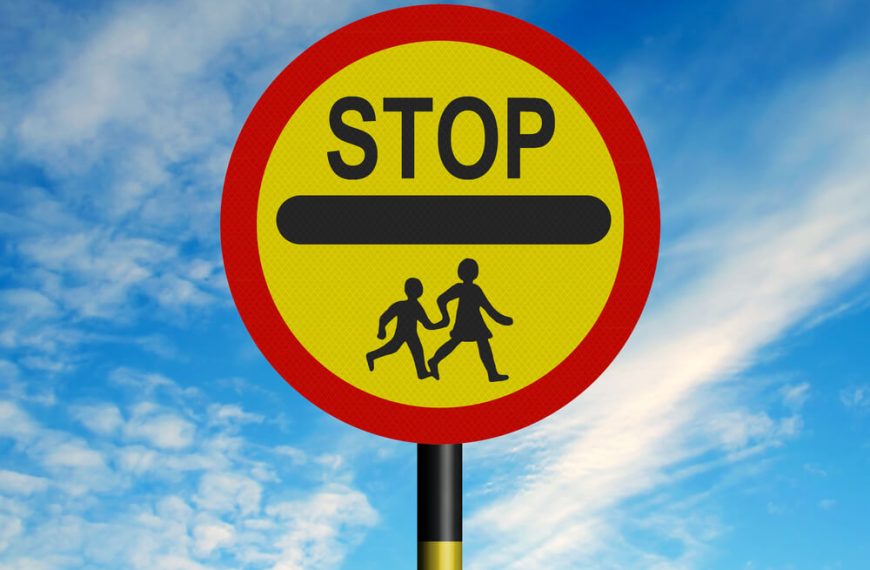Road safety rules are something children have to be taught from a very young age. One can’t keep an eye on children all the time, especially as they grow a bit older and you can’t be with them everywhere. That’s why it is so important to give them lessons on traffic rules and signs so that they follow safety rules when they go to school, play outside or take the bus. As children grow older, they go out to play or cycle to the stores or a friend’s house. It is wise to teach them basic traffic rules and signs in India as well as road safety rules before they start going out by themselves.
Nowadays, traffic is a huge problem especially in bigger cities. Statistics show that road injuries are the main cause of death in people between the ages of 5 and 29 years. Children don’t always have the maturity to know what to do and not do when walking on the streets. They require adult supervision and proper knowledge of road safety rules so that they are not at risk. It is necessary to teach them about road safety as soon as they are old enough to step out of the house. Children need to know about the importance of traffic rules and signs, road safety rules and have to be aware of some important tips to keep themselves safe on the road.
Know The Signals
It’s essential to teach your child about traffic lights and signs and what each colour means.
● Green indicates ‘go’ and that’s when vehicles move ahead.
- Red means to ‘stop’ so all the vehicles have to stop.
- Yellow means to slow down so vehicles should slow down and prepare to stop.
- The ‘Walk’ or a walking man symbol is meant for pedestrians. You should only cross the road if the signs turn green. But you must always look both left and right to ensure that there are no vehicles approaching.
- Never ever cross the road if the ‘Don’t Walk’ or walking man symbol is red.
You must tell your child that sometimes instead of the walking man or ‘Walk’ signs a hand symbol may be used. Gradually, teach your children all the essential traffic signals they should know.
Cross Roads at Zebra Crossings
Zebra crossings are placed where it is safe to cross the road. Children must be taught to cross the road only at zebra crossings. Even then, they must focus and look both ways to see that there are no vehicles coming.
If there is no zebra crossing, They should only cross when vehicles are a safe distance and then first look left, then right and then left again before crossing. Children below the age of 6 years should only cross with adult supervision and hold their hand while crossing the road.
No Running on Streets
Children tend to be impatient and excited and may run across the street to get to the other side. They may also run along the road while playing. Make it clear to them that it is a strict no-no. Children get distracted easily and may leave their guardian’s hand to run away. Tell them that running on roads puts them at risk and they need to stay calm on the road.
Always Use Pavements
Pavements are meant for people to walk on so teach your kids that they should always walk on the pavement and not on the road. Teach them by example by walking on the pavement even if the roads are empty. If there is no pavement, teach them to walk on the left side of the road so that they are facing the oncoming traffic.
Never Stick Hands or Head Outside a Vehicle
Kids have a tendency of putting their hands and sometimes even head out of a moving school bus or car. It may seem like fun but is highly dangerous. They can be hit by vehicles coming from the opposite direction or signs and trees that are close to the road. Children must be taught how dangerous this is.
Buckle up in Cars
Seatbelts in cars are a must as they protect us from injuries caused by an accident or sudden braking. Before the car moves, ensure that kids are buckled up. It’s best to start the habit at a young age so that they grow into responsible adults.
Always Get Out At The Kerb Side
Teach your child to always get out of a vehicle on the side of the footpath. Children may not always be noticed easily by other drivers and are at a risk if they get off on the wrong side. Whenever parents stop their car, it should be by the footpath so that their child gets into this habit. This rule applies even if your kid takes the school bus. Also, teach them to start early so that they are not running for the bus and to stand in a queue when boarding or getting off.
Safety Gear for Bicycle Rides
Train your children to always wear safety gear when going on bicycle rides. Teach them to wear a helmet, knee and elbow guards right from the time they begin to learn cycling. If they are cycling after dark, ensure they wear bright-coloured or reflective clothes and shoes so that they can be easily seen. As a parent, regularly check the brakes and lights of the bicycle. Teach them to only cycle in the bicycle lane. If there isn’t one, they should ride the bike on the extreme lane. Always use a flashing light after dark to be noticed by motorists. Do not allow children to cycle on busy streets without adult supervision. Discourage them right in the beginning from wearing headphones while cycling so that they can hear traffic.
No Crossing Near Blind Spots
Teach your children to only cross the road at clear areas and not between vehicles or any large object. Also, don’t let them cross at bends as they are blind spots for motorists. The vehicle driver may not get enough time to see you and stop their vehicle.
Don’t Play on Streets
Children playing on the streets is risky for kids and drivers. Explain this carefully to your kids and ensure that they don’t play on streets or in parking areas.
Listen Carefully (h2)
Teach children that they may not always see a vehicle, more so if they are standing near a bend. So, it’s important to listen carefully to know if a vehicle is approaching. If they hear a horn, they must immediately stop and look both left and right to see if there is any vehicle.
Safety in a Moving Vehicle
In a moving car, a car seat or seat belts is a must. Teach them to follow simple rules like never standing or walking in a moving vehicle. When boarding a bus, they should wait till it comes to a complete stop.
The best way to teach a child essential rules and regulations is by example. When children see adults following rules, they automatically imbibe them and are motivated to follow them. For more information on teaching children about signs and rules for traffic safely, get in touch with EuroKids for the latest updates.
















